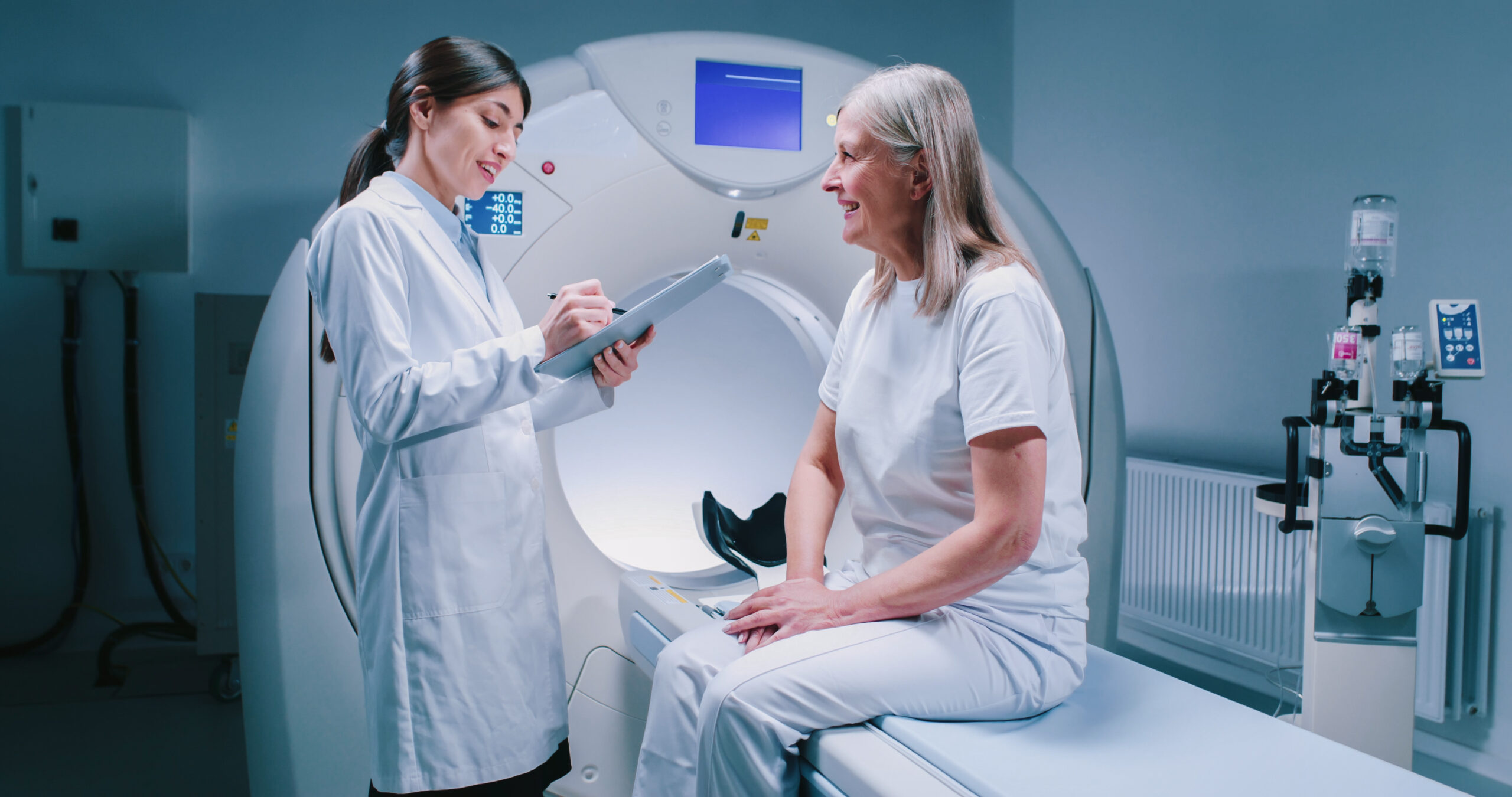Computed Tomography (CT) is an imaging technique that uses X-rays and computer processing to create detailed cross-sectional images of the body’s internal structures. CT scans are valuable for diagnosing various medical conditions. In emergency situations, healthcare professionals typically do not use them as the first choice for routine obstetric and gynecological imaging due to the use of ionizing radiation. Instead, they prefer other imaging methods like ultrasound and MRI during pregnancy and gynecological evaluations. Here’s how healthcare professionals use CT scans in specific situations:

Computed Tomography in Obstetrics and Gynecology:
In rare emergency cases where immediate and detailed imaging is necessary, healthcare professionals may use a CT scan. However, healthcare professionals must carefully consider the risks of radiation exposure to the fetus and may prefer alternative imaging methods.
When evaluating certain gynecological conditions or pelvic masses, especially when other imaging methods have limitations, healthcare professionals might consider CT scans.
In cases where surgical intervention is planned, healthcare professionals use a CT scan to provide detailed information about the extent of abnormalities and to aid in surgical planning.
Considerations:
It’s important to note the following considerations regarding the use of CT scans in obstetrics and gynecology:
To safeguard the developing fetus, healthcare professionals minimize radiation exposure.
For pregnancy and gynecological assessments, they prefer non-ionizing imaging methods like ultrasound and MRI in most cases.
In deciding on a CT scan for obstetric or gynecological reasons, healthcare providers assess benefits versus radiation risks. If a CT scan is necessary during pregnancy, efforts are made to shield the fetus with lead aprons or other protective measures.
Healthcare professionals usually avoid routine use of CT scans in obstetric and gynecological imaging. This is because of potential risks from radiation exposure, especially during pregnancy. Patient and fetus safety is a priority, leading healthcare providers to choose alternative imaging methods without ionizing radiation whenever possible. Medical professionals make decisions about imaging methods based on the specific clinical situation through consultation.


